1 in 66 children have autism (CDC 2014 data)
1 in 20 children have a Sensory Processing Disorder (SPD Foundation, 2010)
1 in 6 children experience sensory symptoms strong enough to affect everyday life functions (Kathleen Morris, MS CCC-SLP 2014)
A quick Google search will provide you with everything you need to know (and more) about how our bodies process sensory information and what happens when such information is processed incorrectly. Sensory Processing Disorders are treated with Sensory Integration Therapy (SI) performed by a specially trained Occupational Therapist.
I am not an OT and do not claim to be trained in providing SI. I do, however, understand the concepts of sensory processing. As a therapist, I need to be able to recognize these symptoms and provide accommodations and support. Of the 28 children currently on my caseload, 23 have sensory processing issues. I have a “tool box” of strategies that I use to help these kiddos have successful therapy sessions. I’d like to share these with you.
This is part one of a part series on addressing sensory processing deficits. Today I’ll tell you what works for me in a formal, clinical setting, help children become and stay regulated.. These tips can also be used in other structured situations such as school, scout meetings, church, or community events. In my future posts, I’ll offer advice on coping with sensory deficits in the unstructured environment of home.
Keep in mind that the sensory system is a finicky, inconsistent system. What works on one child, might prove to be disastrous with another. What works on a Monday, might not work on a Tuesday, but might work again on Wednesday. We adults have to always be on our toes – watching for signs and reaching in our “tool kits” to provide various forms to support to ensure success.
So, here goes:
Self Regulation – the ability to regulate or modulate responses to the environment in a flexible, functional way. A child may be too highly aroused which makes them impulsive, active, loud, unfocused or irritable. A low arousal child is sluggish, sleepy, unfocused , unmotivated and grumpy. Strategies for both groups are similar…the same activity may calming and alerting. The goal is always to get to that “just right place” where engagement and learning can take place.
STRATEGIES TO GET REGULATED
Movement
- jumping on a trampoline (I keep a mini-tramp outside of my office)
- jumping jacks (or “apple jacks” as many of my kids call them)
- Simon Says with lots of leg and arm motion
- “Head Shoulders Knees and Toes” or something similar
- Push-ups against the wall or hard pushing to “push a hole in the wall”
- Rhythmic movement such as rocking in a rocking chair or swinging
- Jumping rope or ropeless jumping (jumpsnap.com)
Fine Motor
- Tracing, coloring, drawing
- Tinkertoys, Legos
- Lacing cards
- Peg boards
- Play Doh, clay
- Play in a sensory bin
- “Figit” toys
Deep Pressure
- Big hugs
- Crashing in a bean bag chair or crash pad
- Lying under a bean bag or cushions while an adult presses
- Weighted vests or blankets (for 20 minutes)
- Special clothing that provides continuous pressure
- www.spioworks.com
- Under Armour underwear
- Belkin Compression sportwear
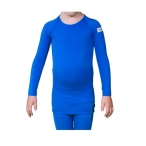
Oral Input
- Hard gum
- Chewy foods such as Laffy Taffy, Twizzlers, Tootsie Rolls, fruit leather, beef jerky, bagels
- Chrunchy foods such as raw carrots, popcorn, pretzel rods, whole apples Strong flavors (if under-responsive) – War Heads, peppermint, lemon, spicy salsa
- Strong flavors (if under-responsive) – War Heads, peppermint, lemon, spicy salsa
- Chewy toys and jewelry
- www.chewablejewels.com
- www.arktherapeutic.com/chewelry
- www.sensorykidstore.com
- www.abilitations.com
- www.talktools.com
- www.therapyshoppe.com

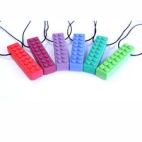
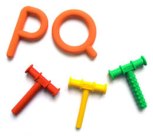
Heavy Work
- Play catch with a medicine ball – I often have kids hold a medicine ball in their lap while working at a table. The pressure is very calming and helps with focus.
- Play with sealed bottles filled with colored water, oil, glitter and small objects
- Move a stack of books
- Sweep the floor, wash the board, rearrange the furniture
- Change positions – work standing up or in high kneel position
Music
- Rhymic drumming, Gregorian chants, Motzart and nature sounds can be soothing and calming.
- Music with discords and rock or hip hop is more alerting
- Some therapists use therapeutic listening and recommend “Calming Rhythms” from stronginstitute.com.
Stay tuned for more resources and ideas for helping your child with sensory functioning. I’d love to hear what works for you!
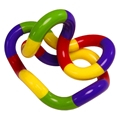
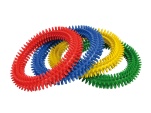
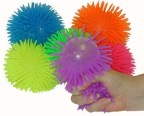

Reblogged this on 21andsensory and commented:
This is a great post with helpful sensory tips and product suggestions to help regulate yourself and provide yourself with a sensory diet. I know it’s based at children but I’ve used some of these products and found them helpful 😊
LikeLike
Reblogged this on Never Less Than Everything.
LikeLike
Reblogged this on ragdollmummas.
LikeLike
Reblogged this on my spanglish familia and commented:
Since I came across Sensory Processing Disorder, I’m convinced I have it, to a certain extent. I see the symptoms in my own children. This is a very informative post on tips for self-regulation for children. The author keeps a mini trampoline outside her office. How cool is that?
LikeLike